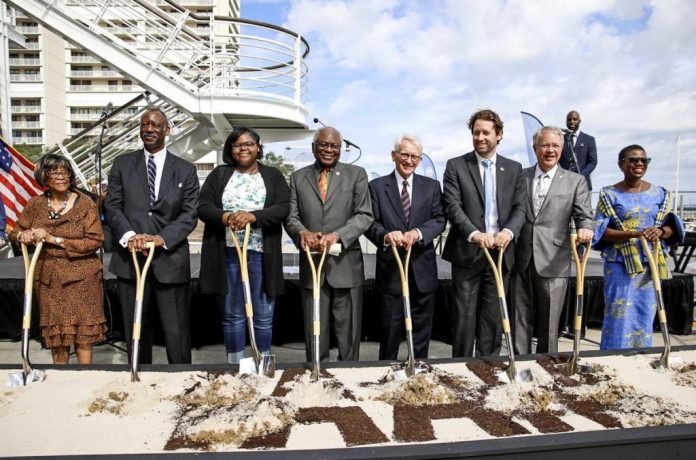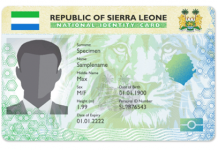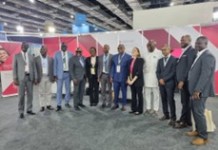
By Sam Pratt
The International African American Museum (IAAM) held its ground breaking ceremony last week with an overflow crowd that includes U.S. Rep. Jim Clyburn, U.S. Rep. Joe Cunningham, South Carolina Gov. Henry McMaster, Charleston Mayor John Tecklenburg, former Charleston Mayor Joe Riley and Mayor Yvonne Aki-Sawyerr of Freetown, Sierra Leone.
With nearly over 20 years in existence, IAAM will tell the story of the hundreds of thousands of enslaved Africans who were taken from West Africa, entered North America in Charleston, South Carolina, endured hardship and cruelty, and then contributed significantly to the greatness of America and the world.
The Museum will honor the site where these enslaved Africans arrived and thousands died, tell their untold stories, and in doing so, will promote compassion and empathy among all people.
“I argued that this had to be an African-American museum,” Clyburn said. “It cannot just be about the institution of slavery. It has to be about what African Americans are, can be, and will be.”
The International African American Museum is projected to open in late 2021. The museum is distinguished by its location on the former Gadsden’s Wharf in Charleston where approximately 48.1% of all of enslaved Africans who came to the United States entered North America.
“Today, where the wharf once stood, we reach out over the centuries to say this”, said former mayor Joe Riley in speaking about the Africans who arrived at the wharf enslaved. “You were not forgotten. You could never be forgotten. Your heart was strong. Your spirit too vibrant. Your soul too pure”, he added.
As mayor, Riley first announced plans to build the museum in his 2000 State of the City Address. Since that time, more than $100 million has been raised from more than 2,000 donors. The remaining fundraising goals include $4 million for exhibits and furnishings and $8 million to increase the museum endowment from its current $7 million to $15 million.
More than 750 attendees filled every seat and the overflow crowd stood; in addition, 7,404 people watched the ceremony’s live broadcast on Facebook. Speaking directly to the audience, Lucille Whipper, a Board member of the IAAM since the beginning, said, “We depend on you to continue the struggle to make sure that all people are recognized for the contributions that they have made to this country. Whatever you can do to join this struggle as we move forward, do it. Don’t say it, do it.”
A world-class team of designers has come together to work with the leaders of the IAAM to create what Architectural Digest calls a “striking new museum where history comes alive.” Moody Nolan is the architectural firm of record and Pei Cobb Freed is the design architectural firm. Walter Hood, Hood Design, and recent recipient of the MacArthur Genius Award, is the museum’s landscape architect; he will create the African Ancestors Memorial Garden. Ralph Appelbaum Associates is the exhibit design firm.
The 40,000-square-foot museum will sit atop nine pillars so that it can honor the sacred ground below. The 104,000-square-foot African Ancestors Memorial Garden will include a collection of gardens and artistic installations that sprawl across the IAAM grounds. A major component of the garden will be a 9,000-square-foot water feature along the edge of Charleston Harbor. The garden will be free and open to the public.
The museum will include eight galleries including a changing exhibition gallery, an orientation theatre, a hands-on workshop, a gift shop and café. The IAAM’s Center for Family History will occupy 16% of the exhibit space and will serve as a research center with a special focus on African-American genealogy to connect visitors to their ancestors.



